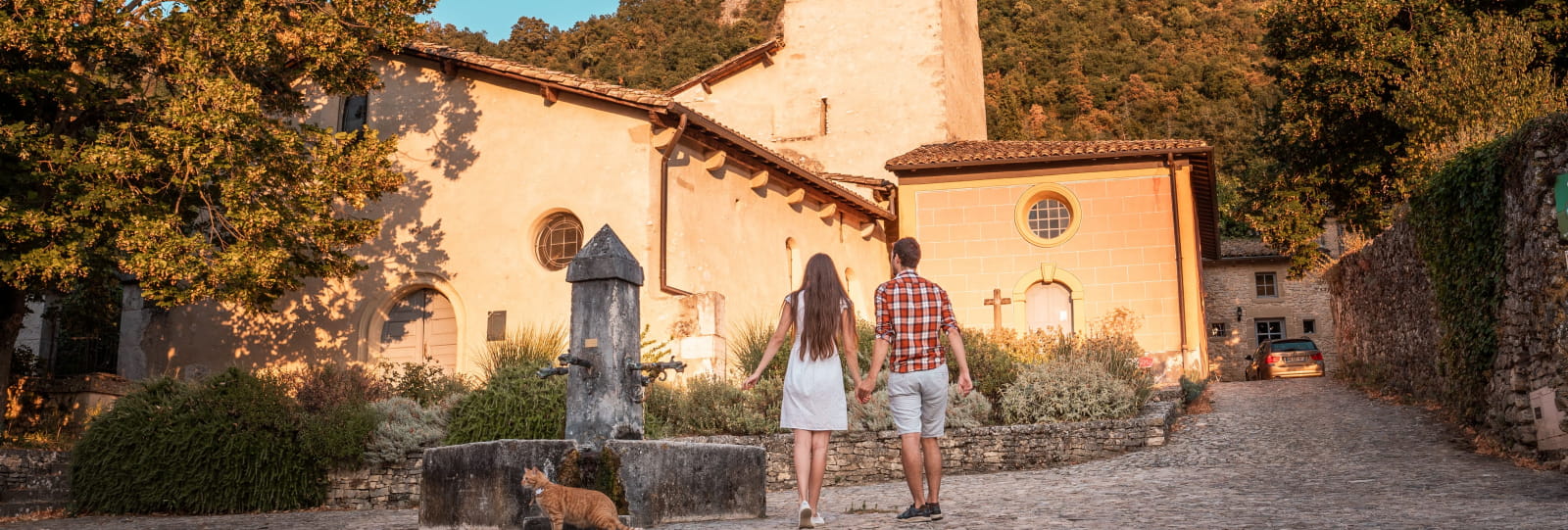
Eglise de Saint-Martin-d'Hostun
Phone04 75 48 80 33
The church of Saint-Martin-d'Hostun, listed on the Supplementary Inventory of Historic Monuments since 1978, is built in the foothills of the Vercors, at the foot of the Monts du Matin.
This is one of the most beautiful spiritual places to discover in the Drôme: the church, priory and chapel of the penitents of Saint Martin d'Hostun.
Cited in cartularies as early as the 11th century, this former Benedictine priory was Hostun's only church until 1850. Heavily altered in the 16th century, only the present choir dates from the 13th century. In the 18th and 19th centuries, side chapels and a side aisle were added to the building, as well as a small independent chapel to the south, the chapelle des Pénitents, whose rendering has been restored to its original bright colors. A Roman inscription can be seen in the northern base of the façade.
Key by appointment at the Town Hall
The site owes its existence to the foundation of a Benedictine priory belonging to the Chaise-Dieu abbey. Dating from the Romanesque period, the church has retained only an interesting flat chevet, built of small limestone rubble, which appears to date back to the 11th century. Inside, the choir, with its raised floor, is vaulted with a broken barrel vault. A small 13th-century chapel also remains from the Middle Ages, with a rather crude ribbed vault. Its key bears the coat of arms of the former lords of the place.
The nave and western facade were completely rebuilt between the 15th and 16th centuries. In the following century, a modest sanctuary, the Saint-Antoine chapel, was added to the church. A brotherhood of Pénitents Blancs was established here in 1774. The chapel's original stalls and woodwork have been restored. In the 18th century, the church was further enlarged with the addition of two chapels to the north of the nave and a side aisle to the south. Finally, in the 19th century, an exceptional set of trompe-l'oeil decorations, executed on all interior walls in an Italianate style, completed the building's long history.
Adjacent to the church, the former cemetery, frozen since the relocation of the parish church, boasts a remarkable collection of steles, all dating from before the 19th century. Work carried out in the square uncovered an ancient and medieval necropolis in continuity with this cemetery. A fragment of a Gallo-Roman sarcophagus was also uncovered during this work, and is visible to the left of the portal in the façade wall.
Opening
All year round, daily.
Through Valence Romans Tourisme



